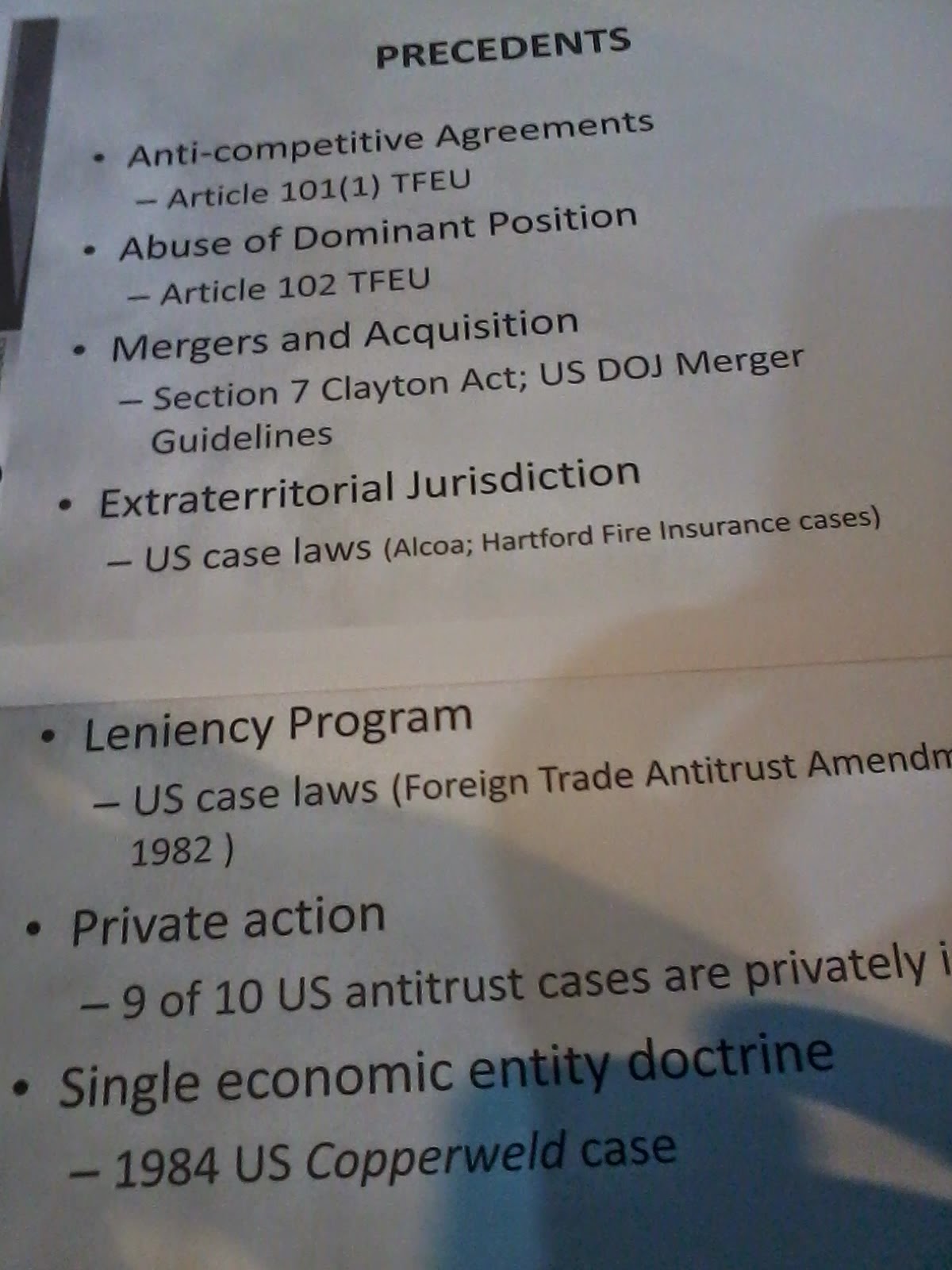International Labor Day tomorow, various labor issues will be highlighted once again. In this chart from a Bloomberg article, China Is Set to Lose Manufacturing Crown, April 29, 2015, the cost of
labor in Beijing,
Shanghai, Guangzhu are twice than those in Cebu and Hanaoi; and 3-4x than those in
Yangon and Pnom Penh.
 Another set of data, 2 1/2 years ago, from Arangkada Philippines.
Another set of data, 2 1/2 years ago, from Arangkada Philippines.I think these numbers represent only the monetary pay. The various mandatory social contributions like SSS + PhilHealth + PagIBIG to PH government corporations, plus HMOs, plus mandatory leaves with pay like paid holidays, are not included yet.
One problem with ever-rising mandatory and legislated minimum wage is that entrepreneurs have the option of hiring as few workers as possible, while giving high pay and various perks to those they have hired, to keep their productivity high, people who can do various tasks.
Another option is to use more machines and robots. Here are two news reports, the first from FT, February 10, 2015, and the second is from The Telegraph UK, February 03, 2015.
(1) FT: "Robots will replace a growing number of jobs in
industries including automotive and electronics in the next few years,
particularly in east Asia, according to new research.
The prices of industrial robots have been falling
steadily, dropping about 14 per cent in the past four years to $133,000 for a
typical system, while capabilities have been expanding.
Some robots are even cheaper: the Baxter robot from
Rethink Robotics has a listed base price of $25,000, making it accessible to
smaller companies that might have found it difficult to invest in earlier
generations."
Three of the uniformed actroids will serve as reception
staff at the Henn-na Hotel, scheduled to open in July. Alongside them will be
four service and porter robots, an industrial robot serving as a cloak room
attendant and several robots whose primary task will be to clean."
Related to Mary Jane Veloso's case in Indonesia, some people blast the PH
government's "labor export policy". There is such a policy? I am not aware of that policy. If so, what law
or RA, or Executive Order (EO) or Administrative Order (AO) is it?
Employment is a private contract between the employer and
employee, whether the employer is a foreigner or local; whether the employment
will be abroad or here. Thus, the decision to work abroad, or study and live even temporarily abroad, is an individual and/or household decision.
And if people decide to work abroad, it is important to obey the rules and regulations of the new destination country. We may disagree with their laws, religious and cultural practices, but we are guests there, we have to respect and obey their rules. Otherwise we should not entertain the idea of setting foot there in the first place.
Then some people blast that "employment contract" because it perpetuates inequality in society between the workers and businessmen, employees and employers. Well if people do not want to become employees -- whether by
Filipino or foreign employers -- they should employ themselves, become start up
entrepreneurs and job creators. It need not be a big or medium size company, it can be a micro project like food stall, or an internet shop, or become free lance writer and consultant, etc.
See also:
Labor Econ 12: Wallace, Lenin, Stalin, Mao, May 02, 2013
Labor Econ 13: The Term 'Jobless Growth' is Wrong, April 15, 2014
Labor Econ 15: Europe's High Long-Term Unemployment, August 06, 2015
Inequality 25: On High CEOs Pay and Legislated Minimum Wages, April 30, 2015















































